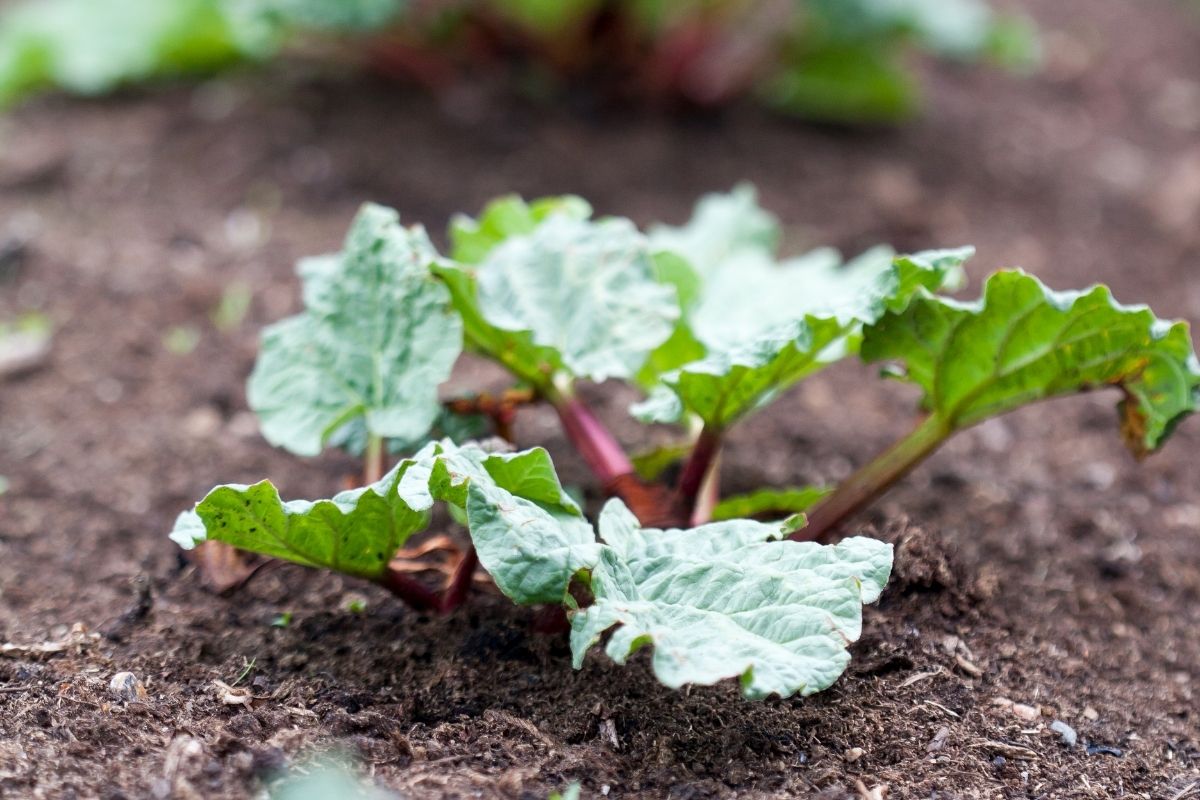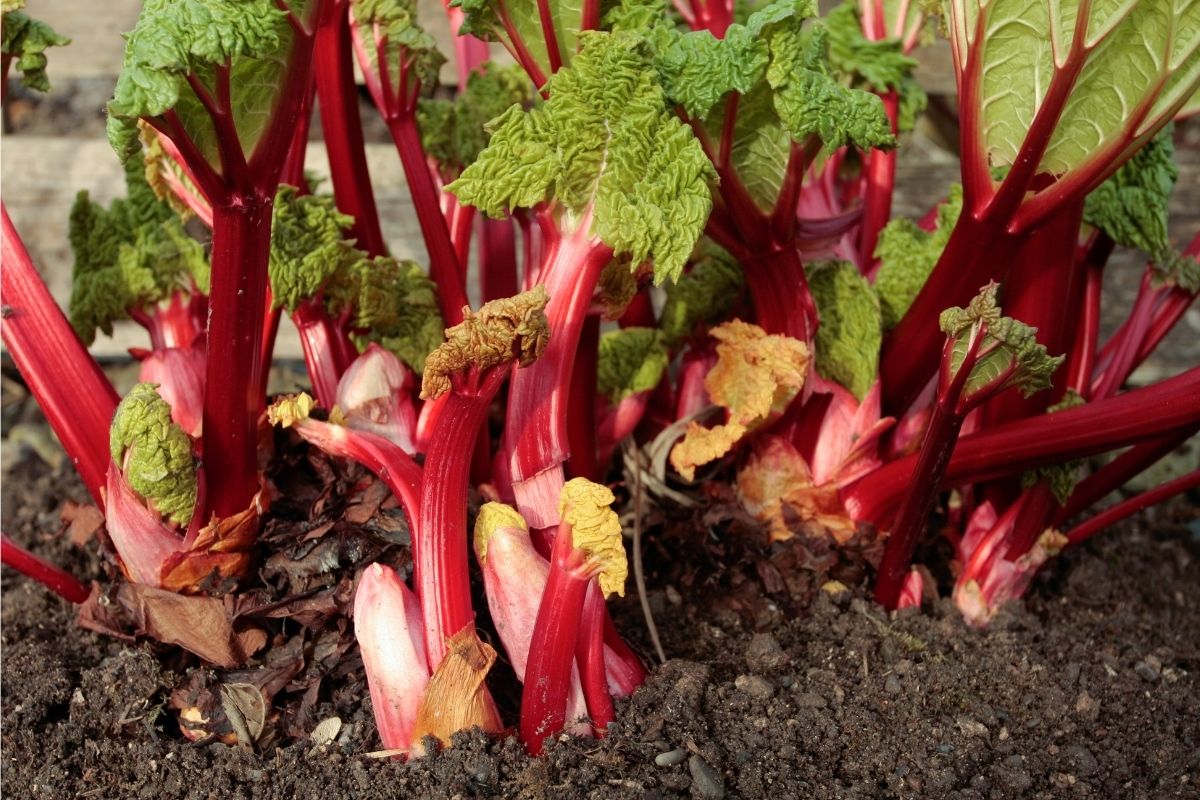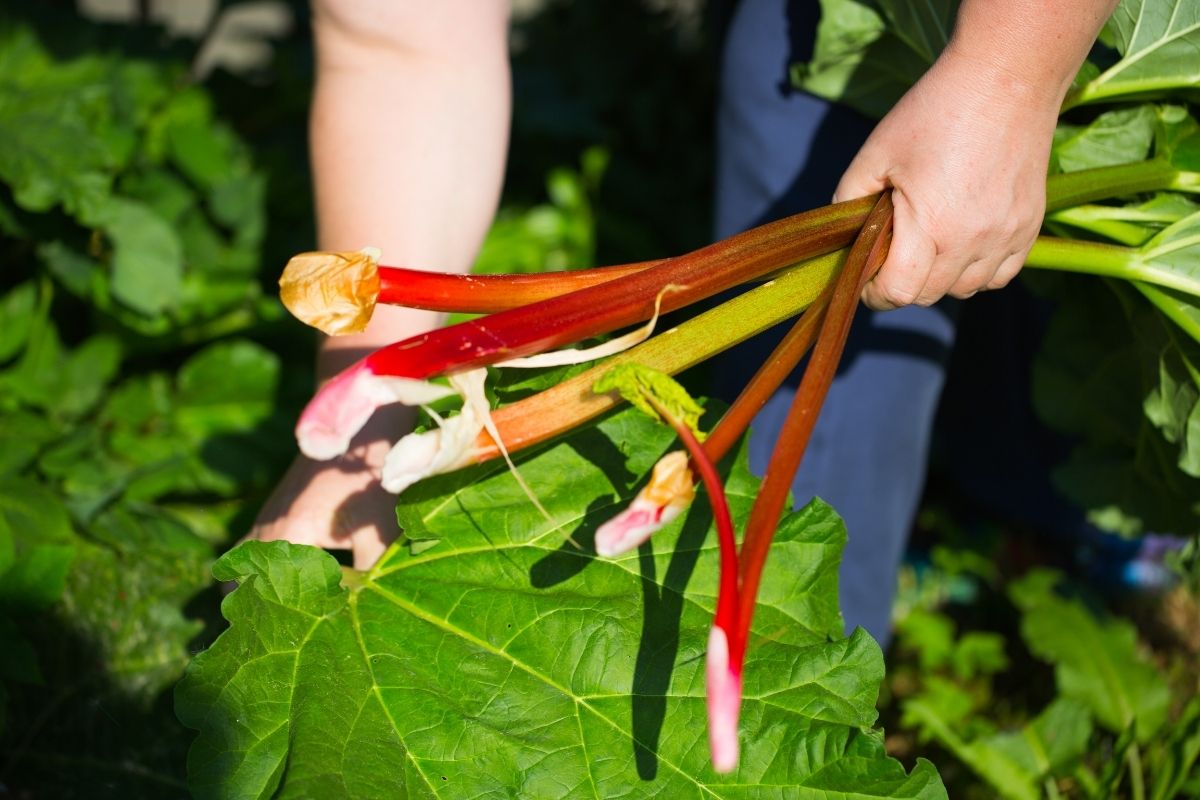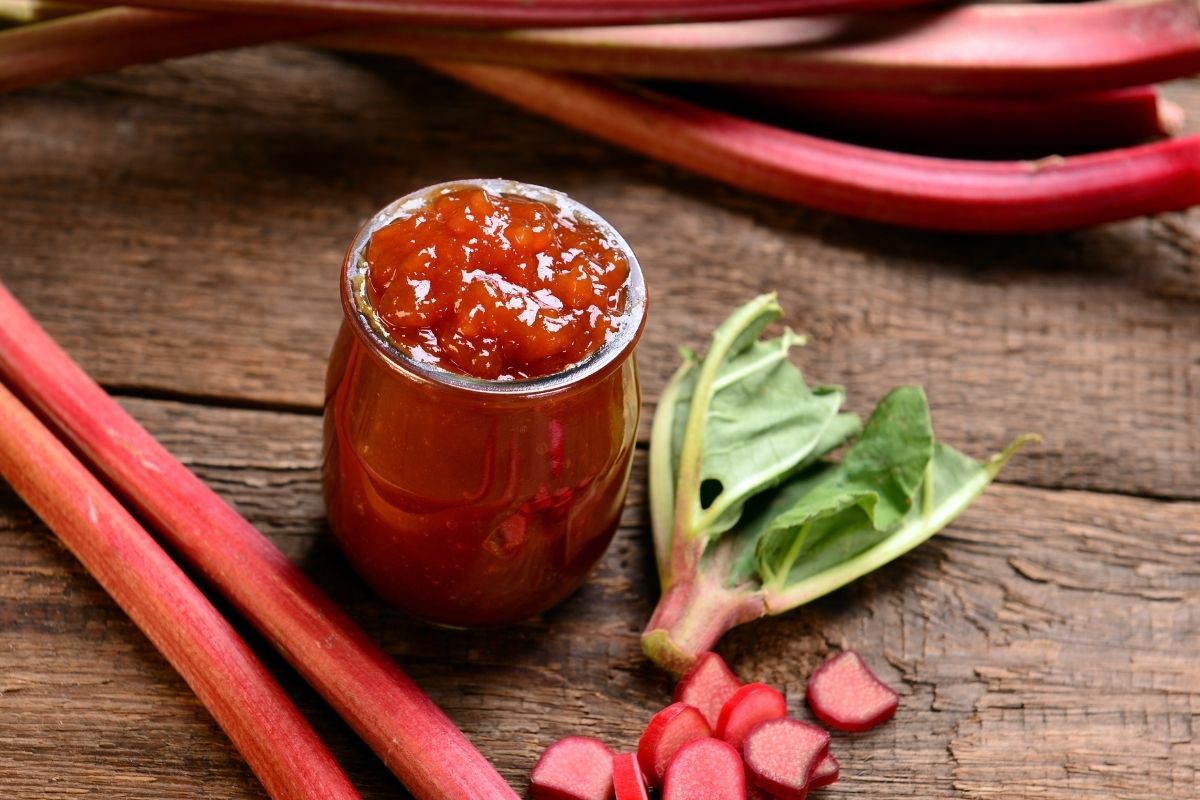Rhubarb makes a delightful dessert when stewed and topped with a dollop of ice cream or some warm creamy custard, or included in a crumble. Despite its use as a sweet pudding, rhubarb (Rheum rhabarbarum) is technically a perennial vegetable and has stalks similar in appearance to celery, while botanically it is from the same family as sorrel and buckwheat.
While rhubarb is often grown from crowns divided during winter, it is easy to grow from seed providing you have enough space and some patience. Plants grown from seed will generally take an extra year to establish than a mature crown, but at a fraction of the cost.
Before You Plant
Rhubarb is a perennial, so a permanent location with enough space for mature plants is required. Rhubarb grows easily in areas with cool winters, where plants may crop for 10 to 15 years. In cool climates choose a location that receives at least 6 hours of direct sun each day. Rhubarb will wilt in very hot weather, so choose a semi-shaded area protected from the afternoon sun in warm temperate and sub-tropical climates. Varieties more suited to warmer climates tend to have greener stalks and be shorter-lived.
Rhubarb also prefers a soil that is slightly acidic with a pH range of 5.5-6.5. Rhubarb will not suit wet soils, which may rot the crowns over winter. Grow rhubarb in raised beds if you have heavy clay soil. Other than that, rhubarb is relatively unfussy and needs little ongoing maintenance once established.
Sowing Your Seeds
Sow seeds in spring or summer directly into a prepared garden bed or into seedling trays, punnets or seed starter pellets. The latter method is generally preferred as it will help protect young plants from extremes of weather and slug and snail damage. Sow seeds 12mm deep in a potting mix that is free-draining, and keep it just moist. You can use a potting mix with perlite added to help with water retention and drainage, or a standard seed raising mix. Seeds will germinate in 7 to 14 days at soil temperatures of 20 to 23°C.
You can sow two seeds to a cell or pellet and then thin the weakest if both germinate, or sow one to a cell and put up with the occasional empty space. An average family of four will only need a couple of healthy rhubarb plants to keep them in rhubarb crumbles during spring and summer, but if you have more space, wish to try preserving the crop or want to force some for an earlier crop you may need more plants.
While Your Rhubarb Seeds are Germinating
As rhubarb is so long-lived it is vital to get the initial preparation of the ground absolutely right. Time taken now will result in time saved in the future. Remove all weeds, including the roots of perennial ones, and any large stones or other debris, and incorporate plenty of organic matter. This can be well-rotted, aged manure or garden compost and should be added at around 8kg per square metre.
Planting Out
Once seedlings have grown to a good size and developed a strong root system they can be planted out, after hardening off, into their final positions. Seedlings should be planted around 50cm apart in rows 70cm apart. Keep well watered for the first year.
Cultivation
Don’t harvest anything the first year, but providing the plants establish well you should be able to enjoy a modest harvest from the second year and then a full one from year three onwards. It is also important to remove flowering stalks as soon as they appear as this will reduce stem production.
In cool and alpine climates, rhubarb will die down over winter, reshooting in early spring. In warmer climates the plants will be evergreen and will produce year-round. Top dress with aged chicken manure or a couple of inches of well-rotted cow manure every spring. Try to keep the manure or fertiliser away from the crown to avoid rotting it.
To reinvigorate an ageing clump of rhubarb that has begun to lose some of its vigour, plants can be divided every 3 to 4 years in late autumn. Select the healthiest of your plants and dig them up with a good clump of soil around the roots. Divide into pieces that contain two or more buds and replant in the manner described above for young plants. The middle of mature plants often becomes woody and unproductive and if this is the case it may be discarded.
Forcing for an Early Crop
In the UK, there has long been a practice of ‘forcing’ rhubarb to give an early crop of pinker, sweeter shoots. This is done by excluding light from midwinter. Often an ornamental terracotta forcer with a small stopper is used to add beauty to an otherwise dull winter scene, but there are cheaper methods of excluding the light. These include using an upturned garbage bin or a box draped in black plastic, which will retain heat.
Sometimes manure is mounded around the forcer to increase the heat for plants, particularly in very cold areas. Once shoots appear under your forcer you should check plants briefly every day to see how they are progressing. Shoots will grow quickly as they search for light and should be ready to harvest in 2 to 4 weeks.
It is important to note that the process of forcing stresses and weakens the plant considerably. Therefore, if you wish to keep your plant for the next year, do not force the same plant too often (no more than once every third year at most) or exclude light for too long in an effort to get a larger crop. You can also expect to get only a partial crop from plants that were forced the previous year.
Pests and Diseases
Slugs and snails are a problem for young and newly emerging shoots. There are many creative ways to repel or kill slugs and snails. Perhaps the most effective is to keep young seedlings off the ground under cover to make it difficult for slugs and snails to access them at their most vulnerable stage. Slugs may be a particular problem if you are trying to force rhubarb as not only will they enjoy eating the tender young shoots, they will also find the warm, damp and dark conditions underneath the forcer very appealing.
Fungal infections and viruses can also affect rhubarb. Funguses are likely to be a problem in more humid climates and will cause the crown to rot. Some viruses will become apparent by mottled yellowing of the foliage, although this can have other causes (including leaves naturally yellowing as the weather cools). In both cases the affected plants should be disposed of and fresh stock brought in. This is best planted in a different site in case the fungus or virus is present in the soil. Do not dispose of infected plants on the compost heap.
Harvest
Plants that aren’t forced can be harvested from the middle of spring into midsummer, and even autumn in warm climates. Harvest stems as soon as the leaves have fully opened but DO NOT EAT THE LEAVES. They contain oxalic acid and are poisonous, though they’re safe to add to the compost heap. Stalks should be harvested by pulling down and twisting at the base rather than being cut off with a knife. Cutting the stems will leave the base behind, which may rot. Of vital importance is to always leave at least half of the stems on the plant at any one time to feed the plant and look after its long-term health.
Cooking and Storing Rhubarb
Fresh rhubarb will store in the fridge for around two weeks after harvest. It is often stewed in water with a little sugar or honey and then used as a filling for crumbles, tarts and pies. Make sure to taste the mix during cooking as rhubarb can be extremely tart! Rhubarb also freezes well so can be kept for use year-round. It can also be used in jams preserves, or in a variety of other dishes. Rhubarb and lentil salad anyone?
Rhubarb as a Pest Deterrent
Rhubarb leaves have traditionally been used to make an insecticidal spray by boiling them in water and then adding a small amount of soap. Be aware that the spray is not selective, so it will kill all insects including the beneficial ones.
All in all, rhubarb is a cheap and reliably abundant crop to grow and is packed with healthy vitamins, antioxidants and fibre. If you have space in your garden, be sure to include a couple of plants so you can look forward to tangy crumbles and tarts for years to come.









